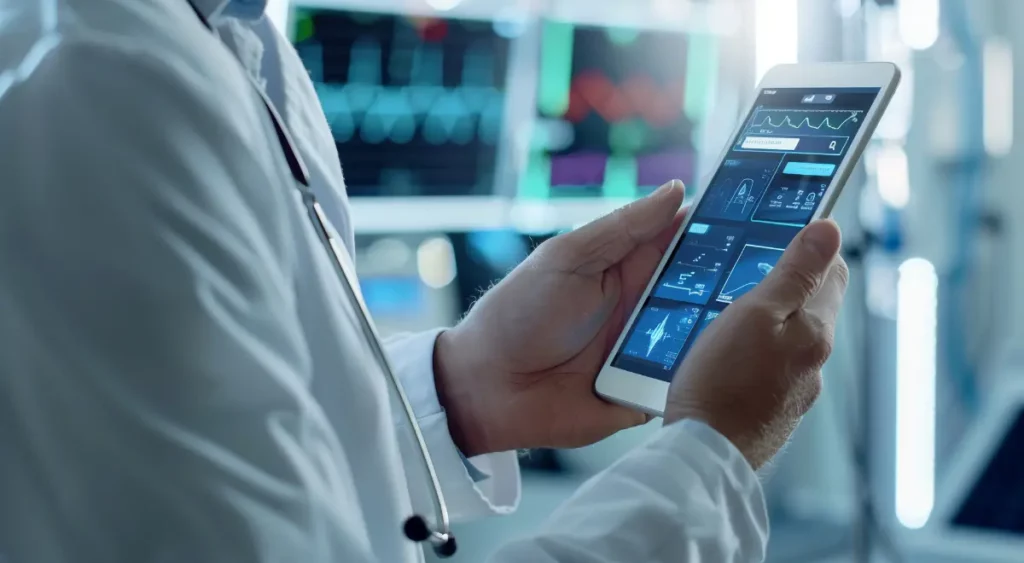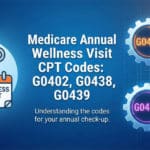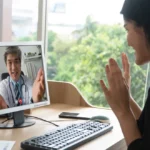Monitoring Post-Surgical Recovery With RPM Systems

RPMs allow healthcare teams to remotely track vital signs and symptoms, detecting early complications and enabling a prompt response to any arising issues. These systems ensure recoveries are safer, readmission is reduced, and care provided post-surgery is more personalized.
Recovering from a serious illness or surgery can be really stressful, especially for a patient who is staying in a closed hospital room, surrounded by doctors and nurses rather than their family. It can also be financially draining for a healthcare provider who’ll be spending hours taking care of a patient who may recover successfully at home.
Though an in-patient hospital offers better safety and access to medical specialists who can help you recover from surgery, patients are likely to make good and quick progress when staying with family, especially when they don’t require round the clock medical assistance.
Table of Contents
ToggleThe Emergence of Remote Patient Monitoring (RPM)
The introduction of virtual health platforms, like Remote Patient Monitoring (RPM) technology has significantly changed the care delivery model by making at-home patient care and monitoring possible. When it comes to post-surgical recovery, RPM allows healthcare providers to monitor their patient’s recovery progress by ensuring continuous monitoring via FDA approved monitoring devices.
RPM assisted post-surgical recovery at home provides patients with the resources and assistance they need to heal effectively. Remote monitoring devices, such as pulse oximeters and glucometers gather and securely transmit patient health data to healthcare providers who access this data to conclude the recovery rate and identify any care gaps.
Depending on the type of device, patients can record their vitals including weight, oxygen levels, blood sugar, body temperature, and heart rate.
RPM’s Role in Postoperative Care
RPM has the potential to revolutionize post-operative care. Patients enrolled in a remote monitoring program by their healthcare provider can recover at their home after surgery, knowing that their health and progress have been monitored continuously.
Along with saving a provider the time to monitor a patient from an in-patient facility, RPM also saves patients from the hassle of traveling to a doctor’s clinic while recovering from a procedure.
A study conducted to find out the value of RPM in postoperative recovery concluded that it enables “better clinical results, improved patient satisfaction, better accessibility with shorter wait times, and cost savings for both patients and health care organizations”.
Not only this, RPM has the potential to facilitate postoperative recovery with excellent clinical outcomes and a high patient satisfaction rate. Other than improved patient experience and better health outcomes, some of the other benefits RPM offers in terms of post-surgical recovery is saving both time and costs, in terms of transportation for patients and resource allocation for providers.
All these outcomes clearly point towards the positive role remote patient monitoring is playing in post-surgical recovery.
RPM is the Latest Innovation Driving Post-Surgical Recovery
Healthcare providers are always looking for ways to make their patients’ post-operative experience better and remote patient monitoring meets all their requirements by reducing the occurrence of long hospital stays, risk of rehospitalizations, and sudden medical emergencies.
RPM continually monitors physiological data, including heart rate, temperature, and blood pressure, using wearable technology and ready to use smart devices. This data can be easily accessed by healthcare professionals who can then make timely interventions and keep a close eye on the patient’s recovery, outside of clinical settings.
Key Takeaways
- Faster Detection of Complications
- Improved Patient Outcomes
- Reduced Readmissions
- Personalized Recovery Plans
Frequently Asked Questions (FAQs)
Cardiac, Orthopedic, Bariatric, and General Abdominal surgery—these are all RPM post-discharge monitored surgery types with high complication risks that require focused post-surgery RPM vigilance.
RPM systems capture and document vital signs like blood pressure, heart rate, oxygen saturation, weight, temperature, and even pain and nausea, in addition to surgical site reporting.
RPM’s capability to identify post-op complications in a timely manner alleviates the need for ER visits, making outpatient interventions preferred, thus avoiding readmission.
Care teams can actively engage patients through patient apps and dashboards for goal setting, scheduled medication alerts, wound assessments, and two-way communication.
In general, RPM is reimbursed for use by Medicare, with RPM services identified with specific CPT codes. Limitations are likely defined by the type of surgery, patient eligibility, and insurance guidelines.
HealthArc’s customizable RPM platform enables the integration of devices, onboarding of patients, real-time dashboards, and alerts to the care team to enhance the supervision of post-surgical recovery.
Typical devices are Bluetooth-enabled blood pressure monitors, pulsed oximeters, integrated thermometers, ECG patches, and smart scales. Other systems enable patients to submit wound photographs and answer recovery questionnaires through mobile applications.
RPM services are billed primarily with CPT 99453 for setup and patient education, 99454 for device supply with data transmission, 99457 First 20 minutes of Monitoring and Management, and 99458 each additional 20 minutes. They are potentially reimbursable under Medicare and some private insurers, if there is medical necessity.
Boost Post-Surgical Care Outcomes With HealthArc
By helping physicians with care coordination and patient involvement, HealthArc’s RPM platform provides dependable post-surgical care to patients and providers seeking improved patient care. Our FDA approved devices and HIPAA compliant software enable patients to record their vitals from the comfort of their homes. Healthcare providers can keep an eye on this health data and make necessary interventions.
Our RPM software solution is intended to enhance clinical effectiveness, lower healthcare expenses, and improve patient outcomes. Some of the prominent features of our RPM platform include:
- Real-time patient vitals monitoring and data analysis
- Integration with more than 40 medical devices and 20 EHRs
- AI-powered medical transcription tool
- Improved clinical decision support using insights and analytics
Clinicians can monitor their patients, enhance reimbursements, and streamline documentation using our all-in-one remote patient monitoring software.
Through HL7 and FHIR features, healthcare practices can increase staff efficiency, obtain billing information that complies with CPT codes, and guarantee a smooth integration with all major EHRs. To learn more about our digital health platform, call us at (201) 885 5571 or schedule a demo now.
Most Recent Blogs
Categories
Related Blog
- November 26, 2025 | Read Time: 14 mins
Return on Investment (ROI) of Remote Patient Monitoring (RPM): A Complete Guide for ACOs and Healthcare Organizations
The U.S. healthcare system continues its transition from fee-for-service models to value-based...
Learn More- November 24, 2025 | Read Time: 15 mins
Common RPM Pricing Models for Providers: A Profitability-Focused Guide
Remote Patient Monitoring (RPM) has rapidly emerged as one of the leading...
Learn More- October 23, 2025 | Read Time: 12 mins
How RPM Devices Improve Hypertension and Diabetes Outcomes in Medicare Populations
Remote patient monitoring (RPM) is transforming chronic care for Medicare beneficiaries. CMS...
Learn More


